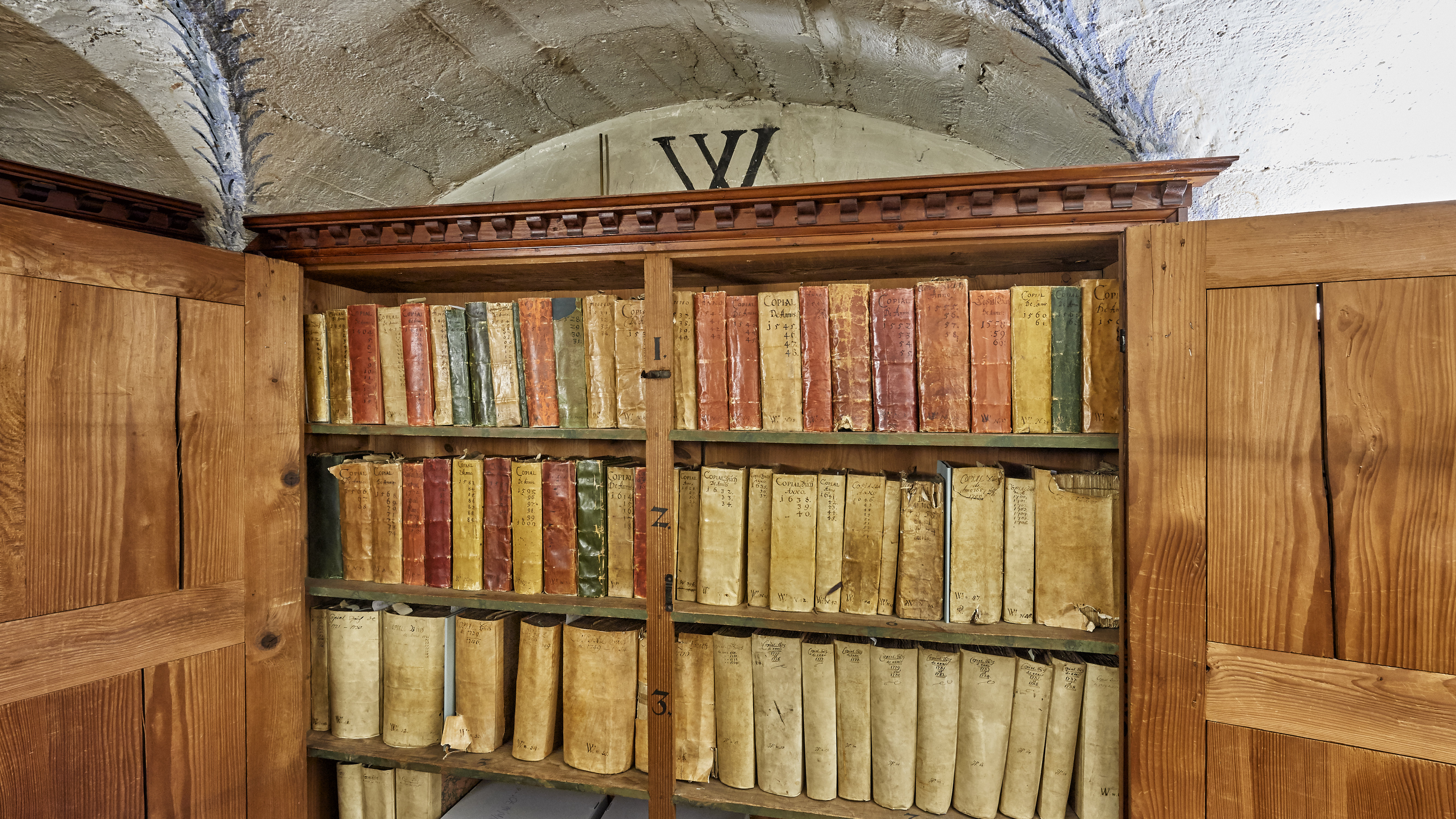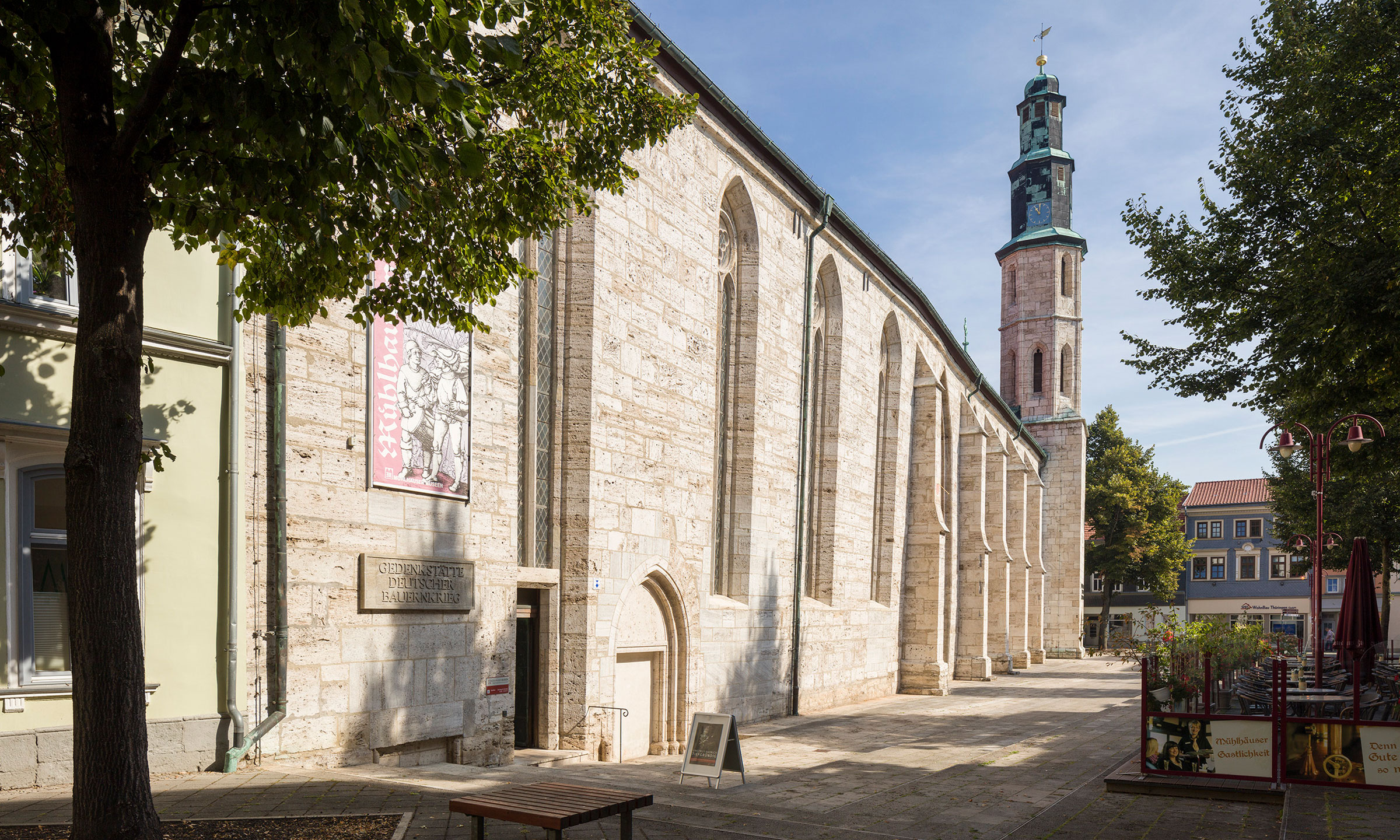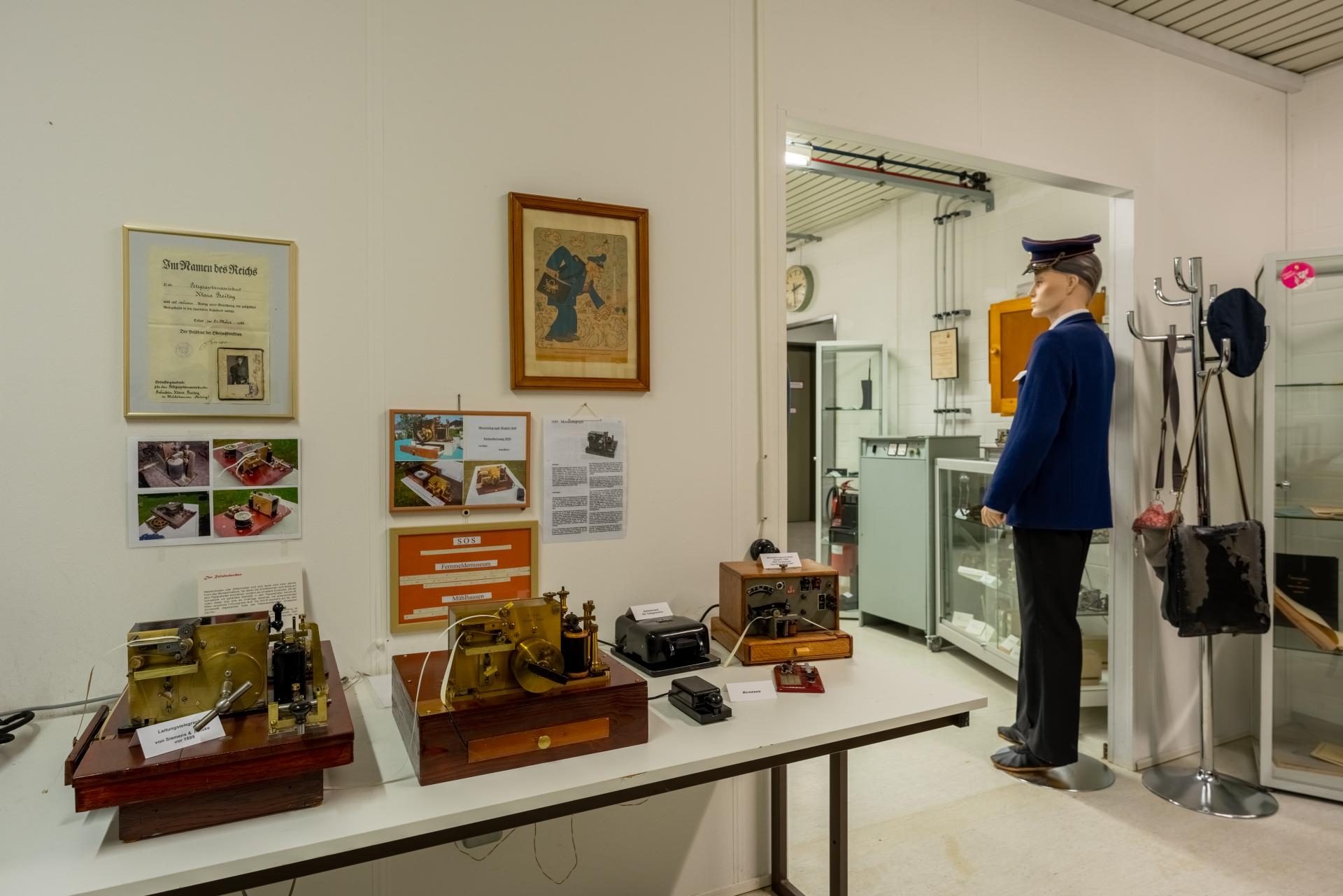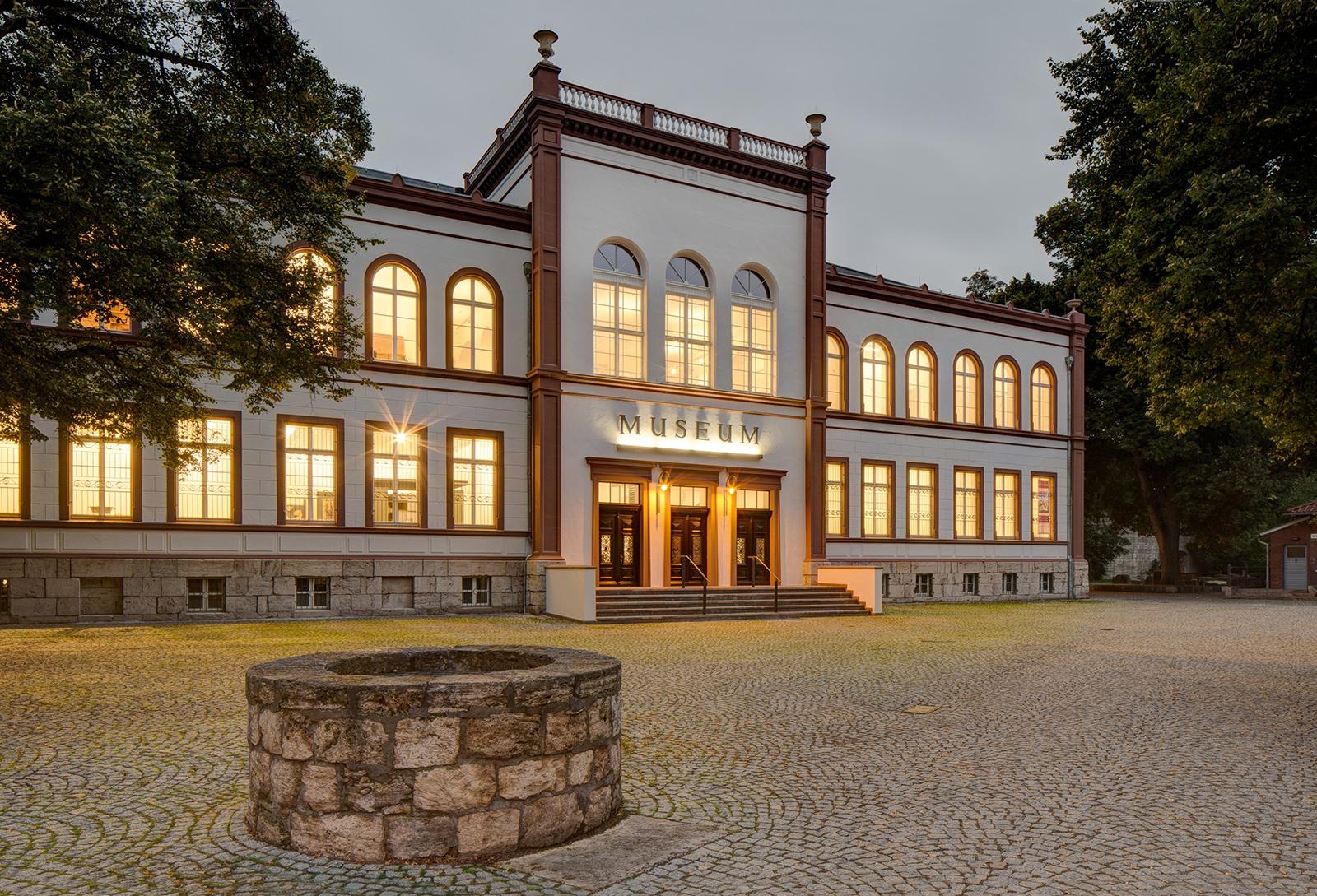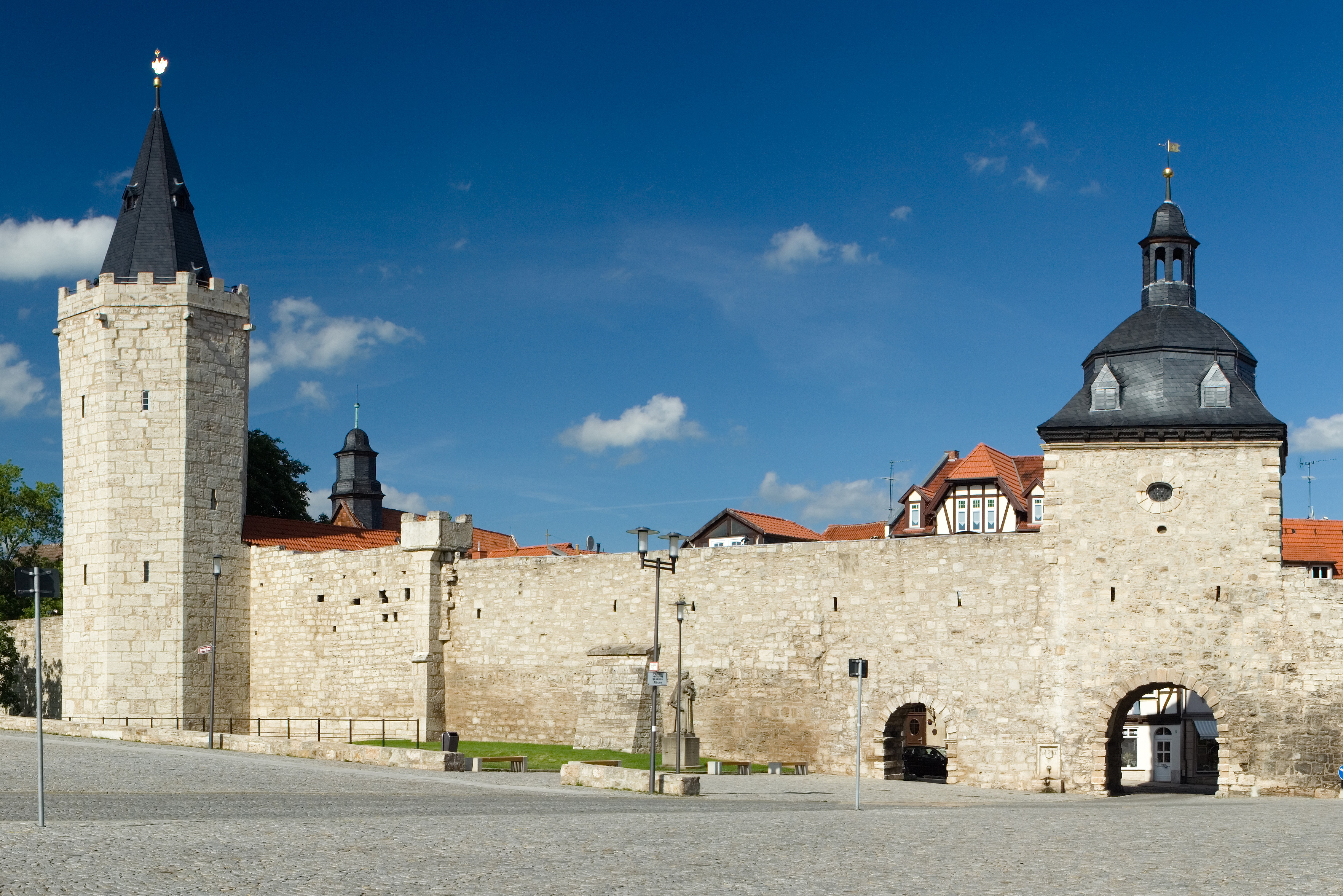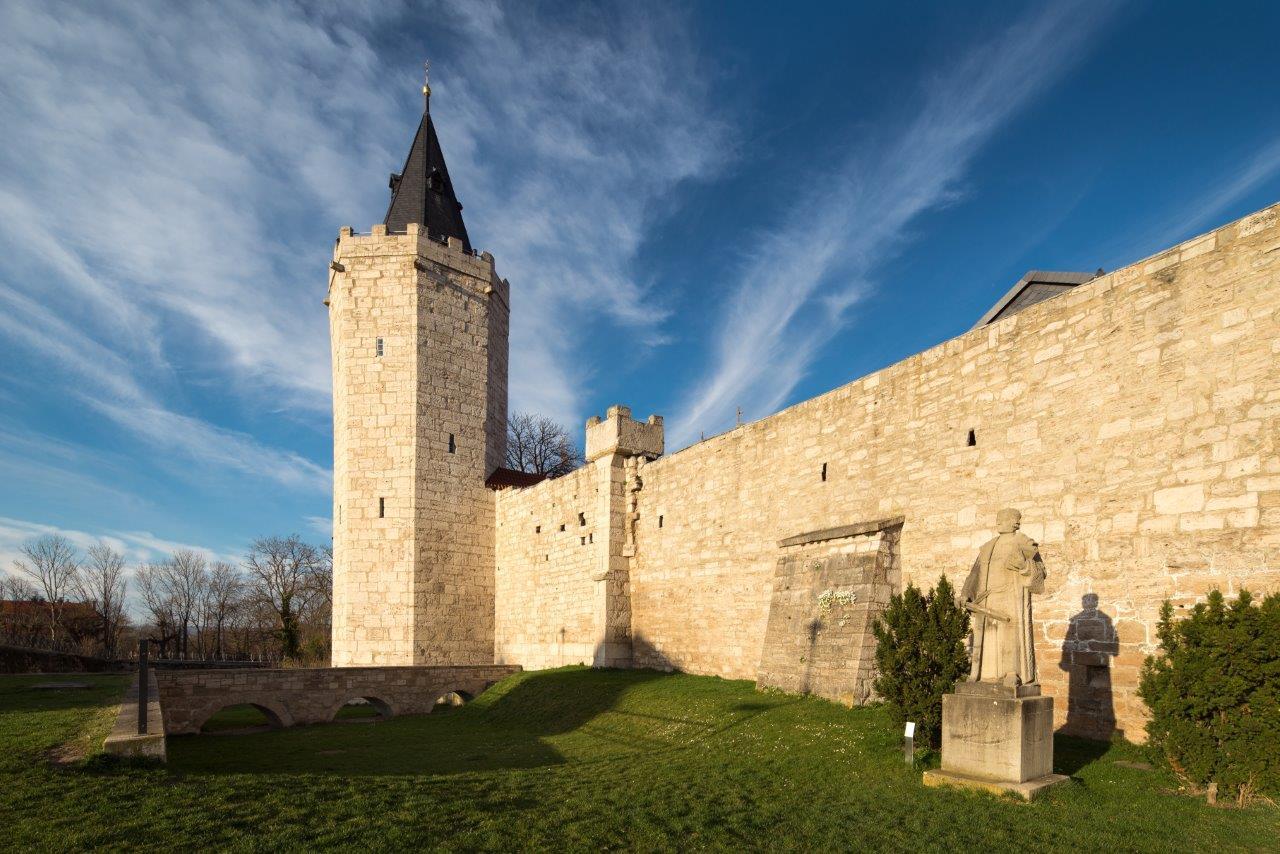The medieval imperial town of Mühlhausen
At the place where several long-distance routes crossed the river Unstrut a settlement was founded in the 8th/9th century, eventually named after the local water mill. As the site of the royal palace Mühlhausen enters written history in 967. The most important event taking place in Mühlhausen concerning the history of the Holy Roman Empire was the election of Philipp von Schwaben from the Staufer dynasty as king of the Roman-German Empire, which took place on 8 March 1198. In the preceding Centuries Mühlhausen had become a sizable city, and the royal palace eventually merged into it. Today’s urban core consists of the older lower town around the Church of Blaise the Divine, and the younger upper town around St. Mary’s Church. In the 13th century both districts were enclosed by a city wall almost three kilometres long, which is still largely preserved today. Mühlhausen’s statute book from the second quarter of the 13th century is the oldest book of city laws in the in the German language and belongs to the most valuable documents in the city’s archive from Mühlhausen’s early history, known as “the rich city”.
Beginning in 1251 Mühlhausen’s constitution changed fundamentally. A city council representing the citizenry replaced the royal officers and took over most of the city administration. With this change Mühlhausen had become an archetypical Imperial City, nominally under the protection by the King and Emperor, but with its own government and laws and the greatest possible sovereignty. Despite various crises the city was able to maintain its status until 1802. Mühlhausen was among the very few Imperial Cities remaining in the very last days of the Holy Roman Empire.
The city on the Unstrut continued to grow rapidly throughout the late Middle Ages. The large urban core, the suburbs dating back to the 14th century, numerous Gothic-style churches, several monasteries and hospitals, the historical town hall and other public buildings bear witness to economic prosperity and growing civic pride. During the Reformation era, particularly from 1523 and 1525, Mühlhausen became the centre of radical religious reformers, such as Heinrich Pfeiffer and Thomas Müntzer, and the place of violent struggles with the traditional authorities. The defeat of the insurgents in the German Peasants’ War in May 1525 brought about the loss of numerous rights pertaining to the city’s liberties, until another golden age commenced in the second half of the 16th century. This period ended in with the Thirty Years’ War, which the city survived outwardly, but it was almost ruined by the loss of its population and high payments to the warring parties. The city’s appearance later changed due to new buildings erected after city fires. Such a catastrophe occurred in 1707, the year Johann Sebastian Bach 1707 was summoned to Mühlhausen as organist. He stayed for one year only, however, despite the short period he left a lasting mark on the city.
Mühlhausen’s era as Imperial City ended on 5 April 1802, when Prussian troops occupied the city. During the industrialisation the city experienced another period of rapid growth. Only then did the medieval suburbs become densely populated. New districts emerged prior to and after the First World War. The core city kept its medieval character, not the least because the magistrates (municipal authorities) valued the numerous historical buildings and put much effort into their preservation.
1933, the year in which the first German democracy came to an end, brought about political repression, persecution, disenfranchisement, expulsion and extermination of many of its citizens. During the Second World War there was also exploitation through forced labour as the death toll grew. However, Mühlhausen escaped the fate of complete destruction. The economy of scarce supplies in the German Democratic Republic posed a serious problem for the preservation of the historic buildings. The year 1975, however, with its state-sponsored celebration of the end of the German Peasants’ War 450 years ago proved to be s stroke of luck for Mühlhausen because the city of Thomas Müntzer received substantial funds for the preservation of its historical monuments. Nevertheless, the demolition of old and construction of new houses continued until the Peaceful Revolution in 1989 ended the old political system. The German unification opened up new possibilities for renovating the historic old town. Despite profound upheavals Mühlhausen today features an impressive ensemble of historical buildings. In Mühlhausen the unique character of a medieval Imperial City is preserved as in very few other places, inviting the visitor to explore its heydays as well as its developments until the present day.
